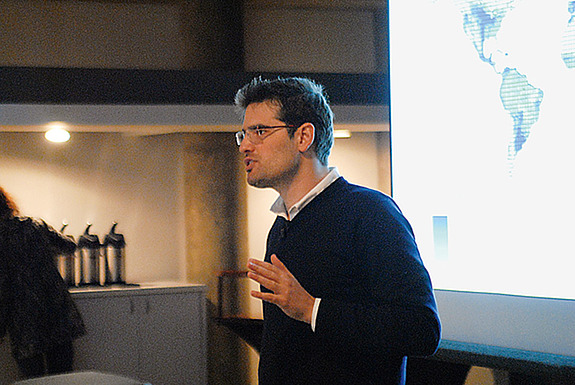Trade and Geography in the Economic Origins and Spread of Islam

Karl Marx linked the structure of production to the formation of institutions. According to Marx, religion is like any other social institution in that it is dependent upon the economic realities of a given society, i.e., it is an outcome of its productive forces. In contrast, Max Weber highlighted the independent effect of religious affiliation on economic behavior. Weaving these insights together, my research with Alireza Naghavi and Giovanni Prarolo of the University of Bologna proposes that geography and trade opportunities forged the Islamic economic doctrine, which in turn influenced the economic performance of the Muslim world in the preindustrial era. Since Islam emerged in the Arabian peninsula when land dictated productive decisions, the arrangement of Islamic institutions had to be compatible with the conflicting interests of groups residing along regions characterized by a highly unequal distribution of agricultural potential.
In particular, we argue that the unequal distribution of land endowments conferred differential gains from trade across regions. In such an environment, it was mutually beneficial to establish an economic system that dictated both static and dynamic income redistribution. The latter was implemented by enforcing an equitable inheritance system, increasing the costs of physical capital accumulation, and rendering investments in public goods, through religious endowments, increasingly attractive. These Islamic economic principles allowed Muslim lands to flourish in the preindustrial world but limited the potential for growth in the eve of large-scale shipping trade and industrialization. In a stage of development when land attributes determine productive capabilities, regional agricultural suitability plays a fundamental role in shaping the potential of a region to produce a surplus and thus engage in and profit from trade. Based on this idea, we combined detailed data on the distribution of regional land quality and proximity to pre-Islamic trade routes with information on Muslim adherence across local populations.
To mitigate concerns related to the endogeneity of contemporary political boundaries, we arbitrarily divided the world into geographic entities, called virtual countries, and found that Muslim populations dominated more unequally endowed places closer to preindustrial trade routes. Naturally, modern states have affected religious affiliations via state-sponsored religion. Nevertheless, the above pattern remains robust when we account for these state-specific histories.
As part of our study, we assembled information on the traditional location of ethnic groups. Consistent with the hypothesis that Islamic economic principles provided an attractive social contract for populations residing along productively unequal regions, we found that Muslim adherence increased with the degree of geographic inequality. Islam spread successfully among groups historically located in agriculturally poor regions featuring few pockets of fertile land and in countries characterized by unequal land endowments. It was in these areas that the Islamic institutional arrangement proved appealing to the indigenous populations.
Islam spread both via conquests and via the peaceful adoption of the doctrine. Because our theory focuses on the economic conditions conducive to the voluntary adoption of Islam, we concentrated on regions outside the Muslim empires. Doing so allowed us to single out the role of geography and trade and mitigate concerns related to the process of conversion within Muslim empires arising from coercion, Arab migration, and differential taxation.
The acceptance of Islam in most of Inner Asia, Southeast Asia, and sub-Saharan Africa is well known to have occurred through contacts with merchants. The independent role of proximity to pre-Islamic trade routes, as a means of gaining access to the Muslim trading network, was also an important contributor. The location of Indonesia along highly lucrative commercial routes, for example, precipitated the spread of Islam since the eleventh century despite a fairly equally distributed regional agricultural potential.
We do not suggest that Muslim economic principles are unique to the Islamic religion. Similar principles of wealth redistribution may be found in other Abrahamic religions at certain points in history, but in the course of time they became less focal. We propose that these principles emerged and persisted in Islam because of a geography characterized by highly unequal agricultural endowments, which shaped the economic aspects of the Islamic religious doctrine. The fact that Muslim merchants dominated African and Eurasian trade routes between the seventh and fifteenth centuries implies that the indigenous populations in Asia and Africa were primarily exposed to the Muslim doctrine. Even if one were to take the view that Christianity and Islam are doctrinally close substitutes, historically the effective choice that tribal areas outside Muslim empires faced was either to become Muslim or to retain their tribal religions. Along these lines we find that local, tribal religions persisted in territories with relatively equal endowments, whereas Muslim adherence increased systematically in territories close to trade routes featuring unequal land endowments.